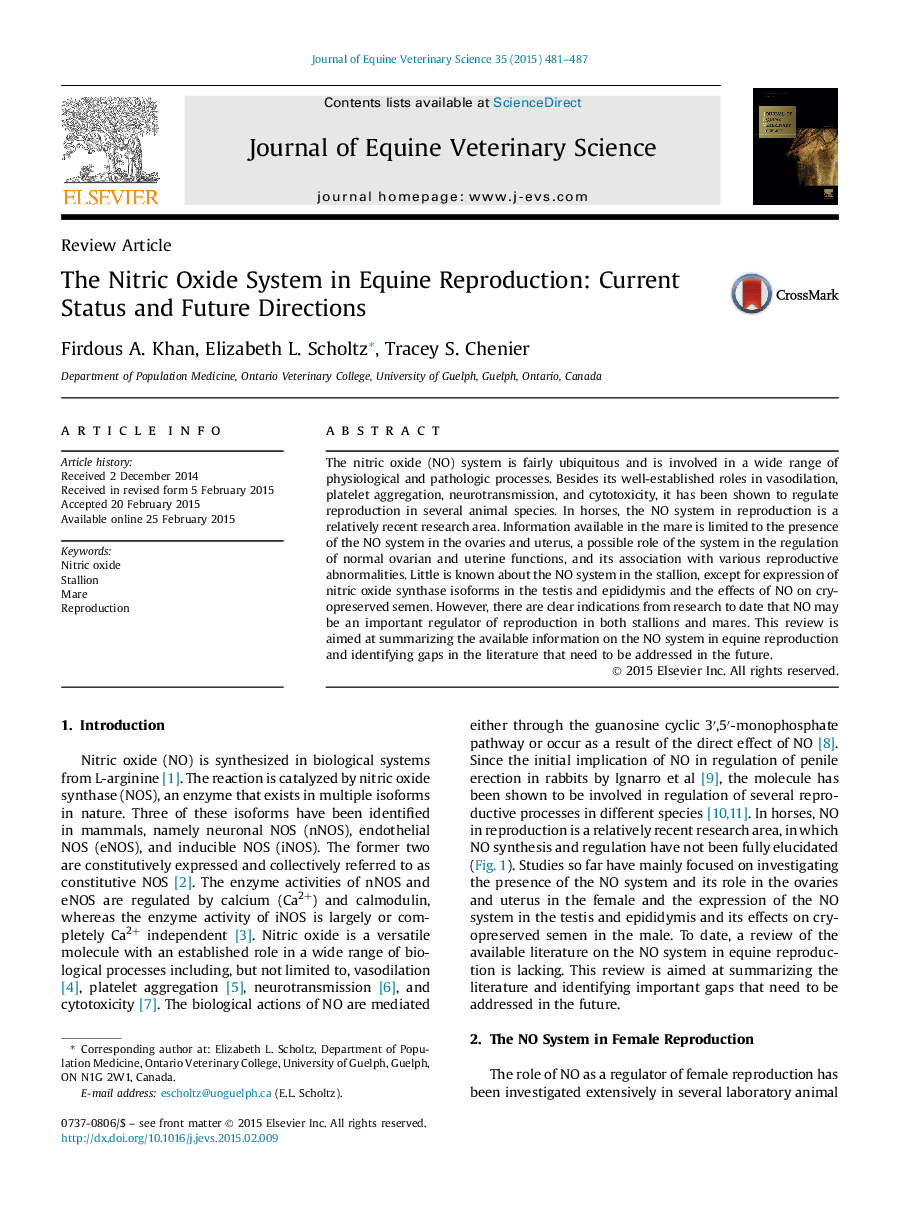| کد مقاله | کد نشریه | سال انتشار | مقاله انگلیسی | نسخه تمام متن |
|---|---|---|---|---|
| 2394863 | 1101537 | 2015 | 7 صفحه PDF | دانلود رایگان |
• Information about the nitric oxide (NO) system in equine reproduction is reviewed.
• Nitric oxide has been identified in male and female equine reproductive tissues.
• Nitric oxide may play a role in regulating follicular steroidogenesis and uterine blood flow.
• Nitric oxide may contribute to stallion sperm motility and membrane peroxidation.
• Further research to elucidate NO's role in equine reproduction is warranted.
The nitric oxide (NO) system is fairly ubiquitous and is involved in a wide range of physiological and pathologic processes. Besides its well-established roles in vasodilation, platelet aggregation, neurotransmission, and cytotoxicity, it has been shown to regulate reproduction in several animal species. In horses, the NO system in reproduction is a relatively recent research area. Information available in the mare is limited to the presence of the NO system in the ovaries and uterus, a possible role of the system in the regulation of normal ovarian and uterine functions, and its association with various reproductive abnormalities. Little is known about the NO system in the stallion, except for expression of nitric oxide synthase isoforms in the testis and epididymis and the effects of NO on cryopreserved semen. However, there are clear indications from research to date that NO may be an important regulator of reproduction in both stallions and mares. This review is aimed at summarizing the available information on the NO system in equine reproduction and identifying gaps in the literature that need to be addressed in the future.
Journal: Journal of Equine Veterinary Science - Volume 35, Issue 6, June 2015, Pages 481–487
